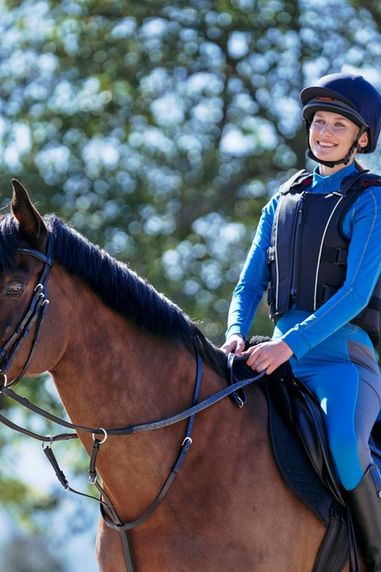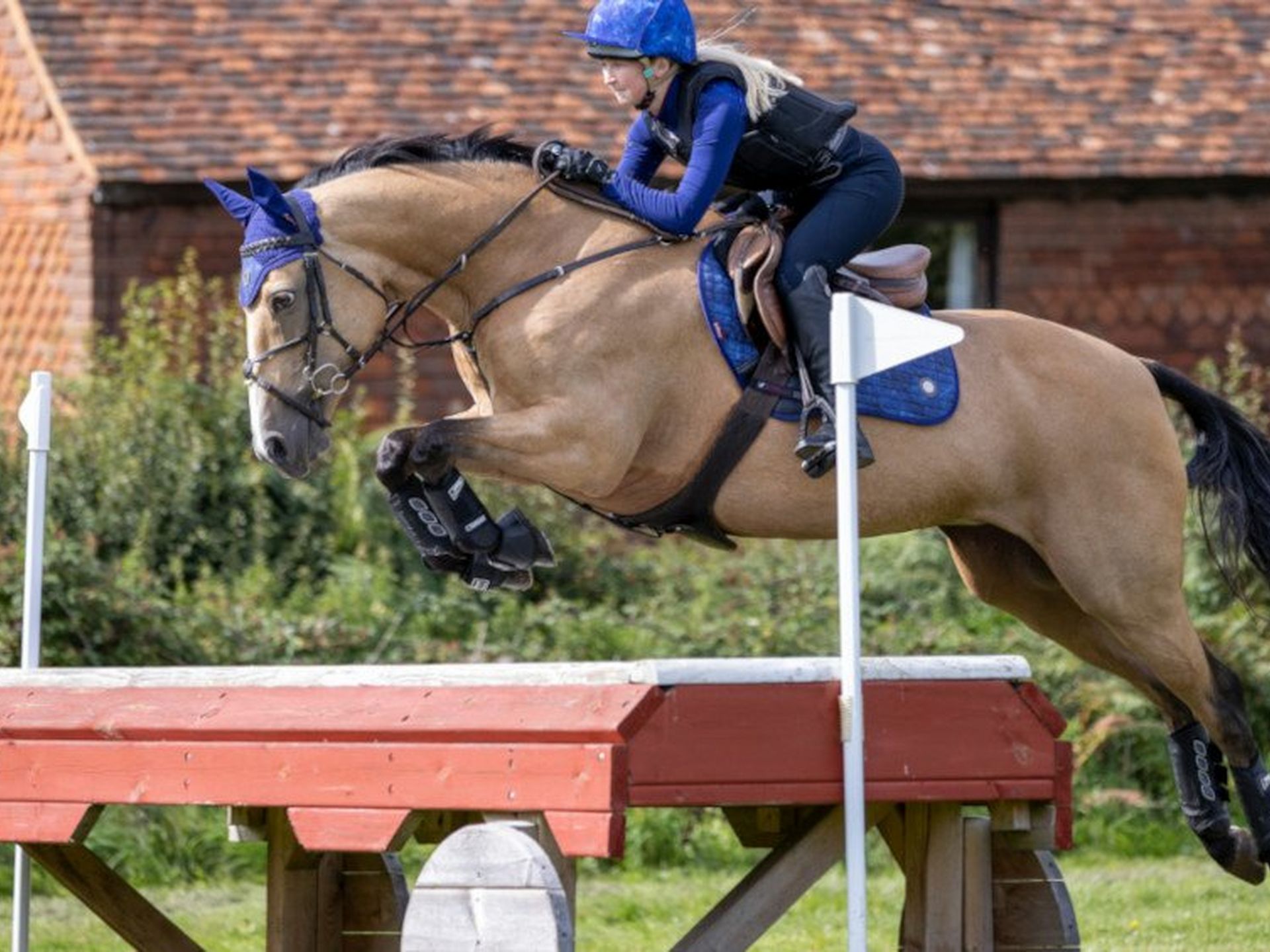
Let's be honest, when we look out the window to see snow, ice and driving rain, it hardly encourages us to go riding! All too often it requires all of our will power and determination simply to brave the elements for essential tasks like feeding and mucking out. Thankfully though, after what feels like an age, the winter is over! Is your horse fit and ready for the season ahead?
There are a whole host of reasons that our horses can be unfit! Whether they've had a well deserved winter vacation, they've been recovering from an injury or they're just embarking on their ridden career for the first time, we're here to help!
There's a good chance that if your horse is out of shape, you probably haven't been riding as much as you'd like! The thing to remember here is that slow and steady wins the race. Key to improving fitness, it's important to ensure that we don't push ourselves or our horses too hard, helping to avoid burning out, injury and fatigue. So, keep reading for a range of techniques and tips to gradually and safely improve cardiovascular fitness, condition, muscle tone and flexibility.

Exercise:
This won't come as a surprise but exercise is the most effective way of improving your horse's fitness. The beginning is a very good place to start! Keep it simple and basic at first, working on the walk, trot and canter. Build up to more advanced school movements and add transitions, this will help to improve straightness, lateral and longitudinal flexibility and engagement. You'll soon be ready to tackle dressage and jumping in no time at all.
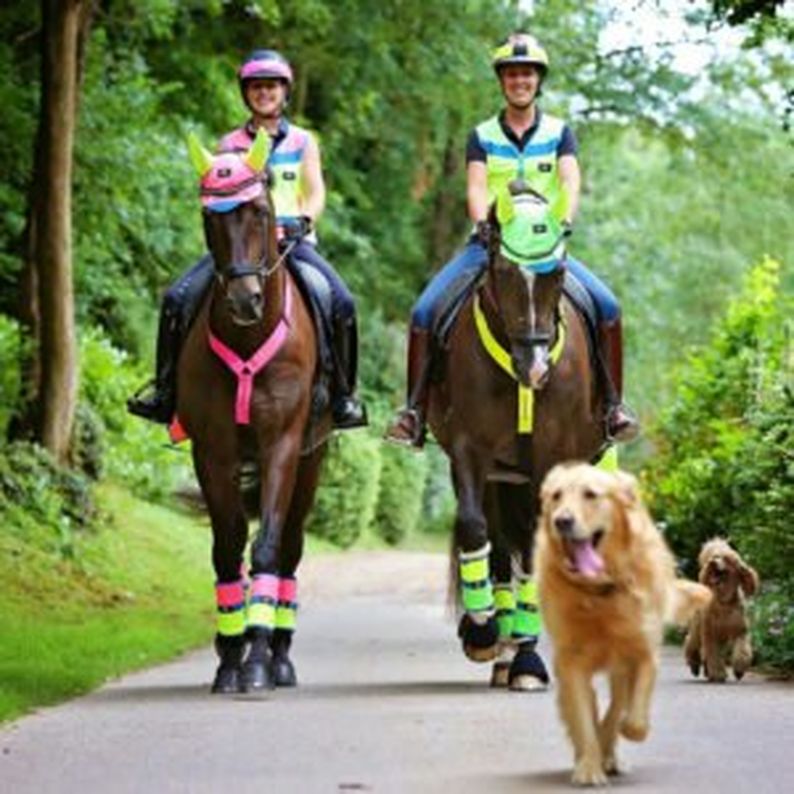
Walk
Possibly the most underutilised pace, there's lots of mentally and physically stimulating activities to do with your horse, without ever leaving walk! Whether you're out hacking on the roads or schooling at home, try riding transitions within the pace. Switch it up and ask your horse to alternate between a free and medium walk, with varied levels of contact. This is great if they're easily distracted or impatient. Encouraging thinking and concentrating, this will come in handy when you start asking for more in the weeks to follow.
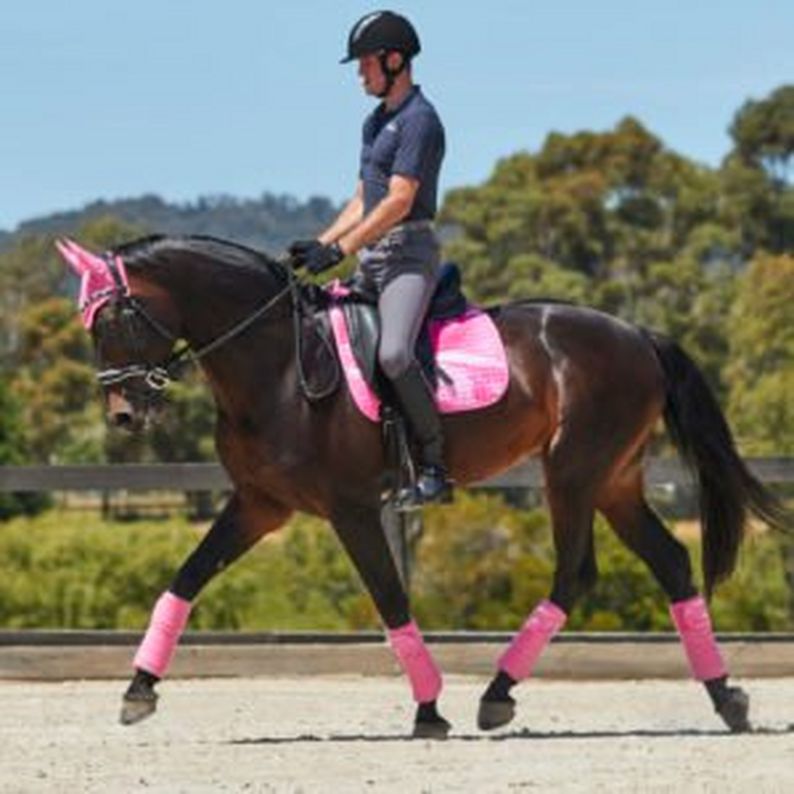
Trot
Ready to take it up a gear? Once you are happy with walk, it's time to start introducing trot. Short bursts with lots of transitions are a great way to get your horses heart pumping. If your confident their trot is balanced and rhythmical and they're listening to your aids, you might like to add hill or pole work. This can really help to build muscle and improve cardiovascular health.

Canter
After 2-3 weeks of working on the trot, it's time to think about canter. Whether ridden or on the lunge, restrict them to short bursts of canter at first. Just because your horse is looking and feeling fitter at this stage it doesn't mean they're necessarily ready for cantering non-stop for long periods straight away. You can gradually start increasing these periods until they are able to maintain a good canter for a good few minutes at a time.
Interval Training

Once your horse has mastered working in all three gaits; walk, trot, canter; you can begin upping their fitness using interval training.
“Physical training consisting of alternating periods of high- and low-intensity activity.”
Interval training is a technique used by athletes across a wide range of sports. More like a sprint than a marathon, you complete a short sharp burst of high intensity exercise, followed by a period of recovery. This prosses is then repeated a number of times. Eventually, this can improve both your horses stamina and how quickly they recover.
When working on interval training it's important to be precise, whether you stick to a set distance, time or heart rate consistency is key to seeing results!
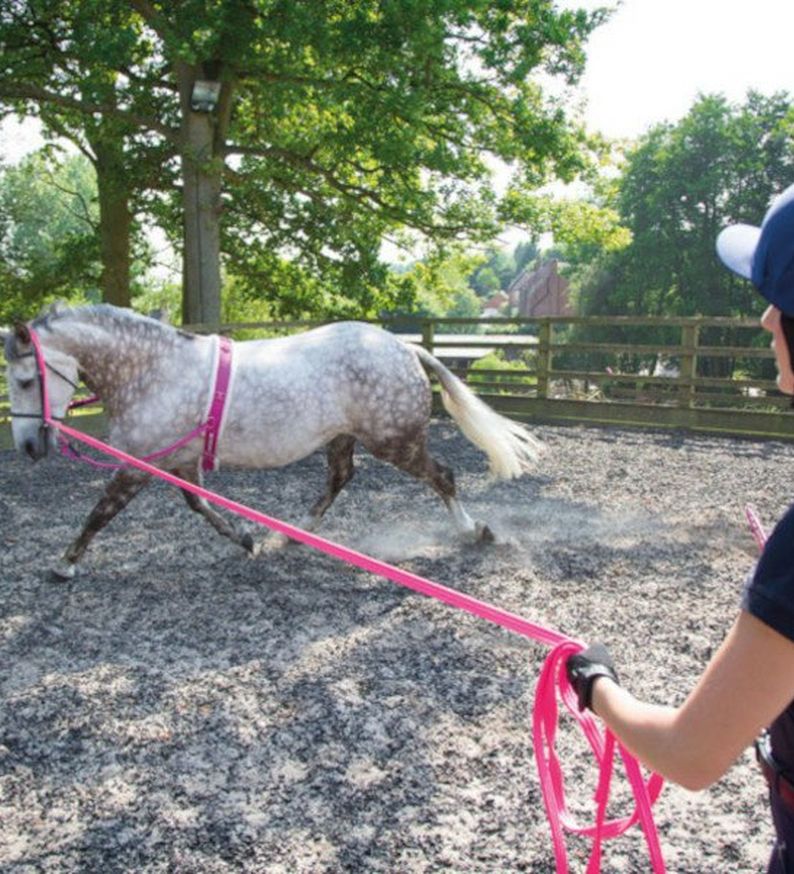
Lunging
Exercise doesn't just have to be ridden. Lunging can be a very useful tool to get your horse fit. Through lunging you can watch your horse's movement in a way that you can't from the saddle. You can use lunging to make sure your horse is working correctly and in a balanced manner. Its also good for building muscles. You may consider using training aids to encourage engagement of the hind quarters and promote balance. Remember that lunging is hard work for your horse as they have to stay on a constant circle. This means you can replace an hour hack with a much shorter lunge session (perfect for days when you're short on time).

Jumping
Are you a fan of jumping? Not only is it good fun, its a useful muscle builder. You don't want to start jumping until you have established a balanced canter with a good rhythm and also built up the leg muscles and tendons in the previous weeks. Introducing more lateral work can also do a lot of good for building muscles but is also fantastic for exercising the brain. If you're training towards competition you will want your horse to be able to concentrate for long enough to complete a course, ride a test or make it through an entire show class.
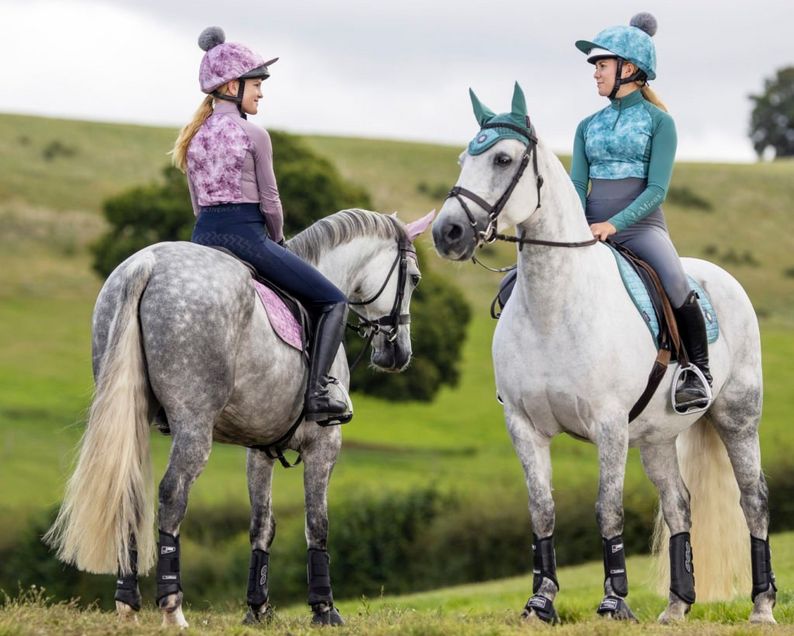
Hill Work
Hill work is highly effective in building your horse's fitness and muscle. This is because it requires your horse to engage their hind quarters and work over the back, improving flexibility and suppleness. Begin by walking up gradual hills, then introduce steeper inclines. If your horse finds this easy, you can also have a go in trot!
Days Out
It's time to up the ante! Now your horse is becoming fitter, you're ready to explore new turfs. Here are some great places to take your horse to continue their training and conditioning:

- Cross-Country Training Days
- Farm Rides
- Beach days
- Classes/clinics
- Competitions
- Countryside trials
- Riding camps/holidays
- Horse/Pony Treks
Things to bear in mind!
- Each and every horse is an individual. The time their fitness takes to improve will differ. So, be patient!
- Stick at it! You wont see results over night.
- Consistency is key. Try to set goals each week, i.e. flatwork x 2, hack x 2, lunge x 1, jumping x 1, rest day x 1.
- Keep it fun for your horse! It should be exciting for them (don't just do one thing all the time!).
- Aim to be exercising your horse as often as you can, whilst still allowing them a couple of rest days each week.
| Day | Exercise |
|---|---|
| Monday | Rest Day. |
| Tuesday | Hack - use interval training - regular gait changes (walk, trot, canter), hill work. |
| Wednesday | Flatwork Schooling - interval gaits, circles, serpentine's, relaxation, straightness, balance work. |
| Thursday | Lunge - each week alternative between loose lunging and lunging on a line. Interval gaits and regular circle-size changes. |
| Friday | Rest day. |
| Saturday | Do something fun! Days-out, hack out with friends, competitions. |
| Sunday | Schooling - jump courses, dressage test sheets, riding lesson. |
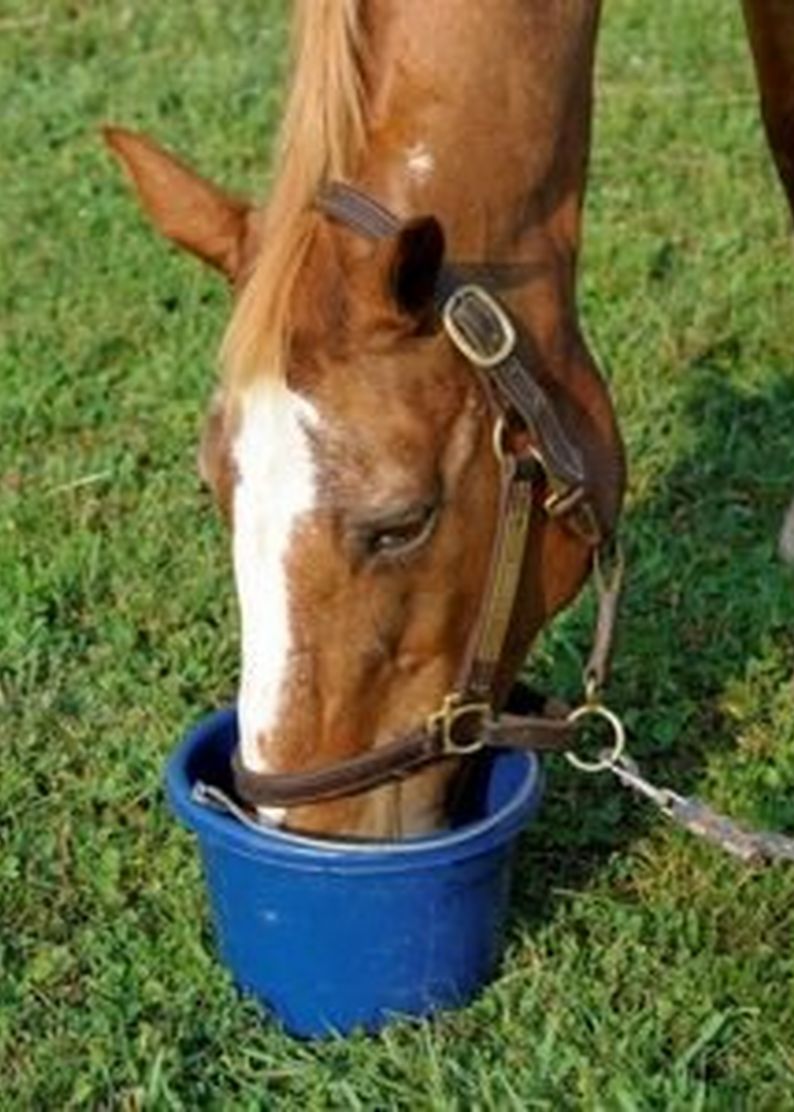
Feeding:
The type, quality and quantity of food your horse eats can have a huge effect on their fitness. When horses exercise they need energy, which comes from what they eat. Horse feeds are all designed with a purpose in mind, they each contain different ingredients and provide varying levels of energy. You may want to feed high, fast release energy feed to your horse if they're competing at top level or require heating calories for an energy boost. On the other hand, it can make some fizzy, in this case opt for a slow release high energy alternative. For good doers, seek low energy foods to avoid excess weight gain. Low starch and high fibre types can be a good choice.
If you're unsure on which feed to choose, read our blog 'Choosing a Feed'.
A big mistake people make is confusing fat for muscle. You can't achieve good topline through feeding alone. If you increase your horse's feed but don't up their exercise they may look like they're improving but their strength and fitness won't change. That being said, good condition comes from the inside, so your horse's food will make a difference in how your horse looks. Consider asking a nutritionist to come to your yard to give you an idea of how you can utilise diet to help when you are trying to get your horse fit.
Conclusion
Both exercise and food are really important to get your horse fit. It is also hugely beneficial to have regular visits from the farrier, vet and dentist. This becomes even more vital if you are getting your horse fit after an injury. Remember that there are no shortcuts when it comes to fitness, so don't expect miracles in week one. If you ever feel that things are moving slowly just remember your end goal and remain focused.
Need any equipment for you and your horse to tackle your new training programme? Shop products for both horse and rider either online or in-store.



